Josephite Earth Sustainability Charter
May 21, 2020We are proud to launch online the Josephite Earth Sustainability Charter.
Context of the Josephite Earth Sustainability Charter:
- Recognition that all members of the human community are invited to live in increasingly sustainable ways;
- As members of a religious community we are called to forms of sustainability which link with our faith tradition;
- Pope Francis’s 2015 encyclical, Laudato Si, situates our faith response and lived reality as being inseparable and integral;
- With the encouragement of the CLT, the Congregational Eco-Spirituaity Team has thus developed the Charter as a resource which connects Josephite Charism and sustainability in ways which reflect the integral ecology framework of Laudato Si;
- Our Josephite document, based on the Laudato Si framework, was developed through a consultative process within the Congregational EcoSpirituality Team from July 2018 to April 2019.
The resultant Josephite Earth Sustainability Charter is a living document and a further step in encouraging all within the Josephite community toward increasingly sustainable practices.
Irene McCormack Reflection
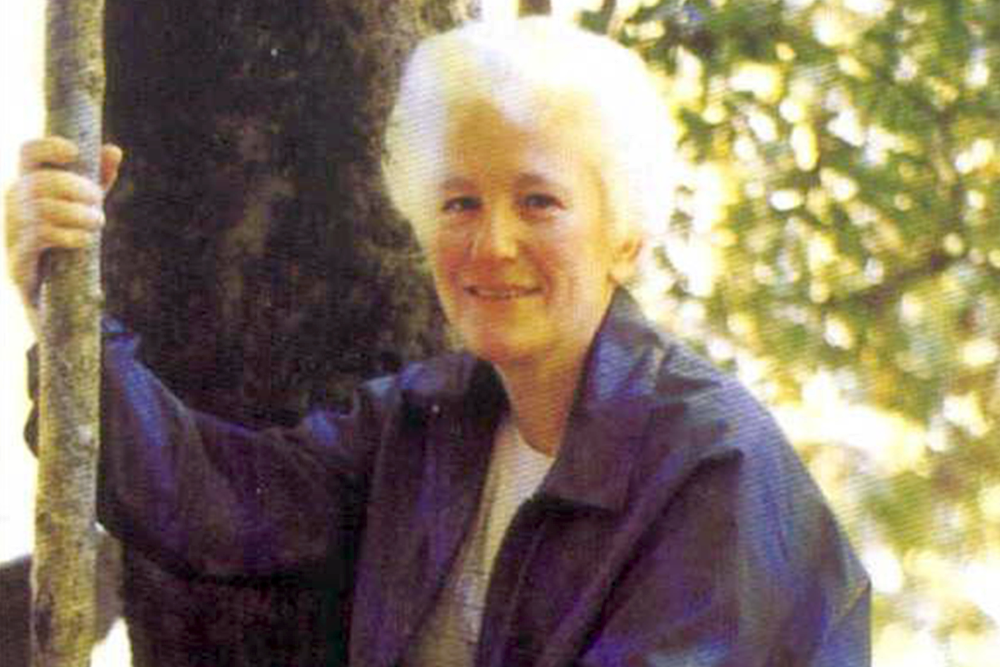
Irene McCormack, Sister of Saint Joseph, killed by Shining Path Terrorists in Huasahuasi on 21 May, 1991.
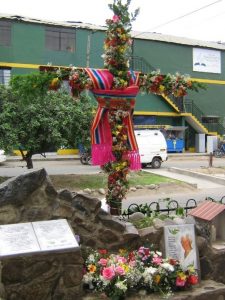
If you go into Google, you will find a web page for Irene McCormack, Sister of Saint Joseph, killed by Shining Path Terrorists in Huasahuasi on 21 May, 1991. In El Pacifico there is a large cross which is decorated with flowers every anniversary and carried in procession from the Eucharist in the Church to be replaced in its rocky monument with joyful songs. In Huasahuasi there is a march through the streets for justice and peace with children from various schools, followed by Eucharist and a walk to her grave in the cemetery on the hill. And why? Because she was killed by the terrorists?
I don’t think that is the most important thing about Irene. I believe that her life was much more important. Long before her life was taken her life was given. That’s why she is remembered so fondly.
In Australia she was a dedicated educationalist with a very strong sense of social justice. I witnessed this at New Norcia where Irene hatched many schemes to help those less fortunate, fostering this attitude in the students at the same time.
In Peru, Irene first worked in El Pacifico, a suburb of Lima. Here she assisted in the Parish with the Family Catechesis programme, befriending the people, joining in their lives and sharing their joys and sorrows. Here she is fondly remembered as a dedicated Josephite, with a ready smile, loving life and sharing the Peruvian passion for dancing. With one family she formed part of the family football (soccer) team playing in the cul-de-sac in front of their house. Others remember her on Mother’s Day taking a red rose to the mothers in the catechesis programme. Some who never knew her pray regularly at her cross in the street.

Irene moved to Huasahuasi and was living with Sr Dorothy Stevenson when they made the decision, like many other Priests and Religious throughout Peru, to remain with the people in the villages to support them in what is now called “The Years of Terror”. Here Dorothy worked with Caritas, among other things, and Irene taught many of the older women to read and write and ran homework classes for the children. Eight of these Priests and Religious across Peru were killed by the Terrorists with their memories honoured in the labyrinth of stones bearing also the names of tens of thousands of the other victims.
Her death, along with that of Noe Palacios Blancos, Agustín Vento Morales, Pedro Pando Llanos and Alfredo Morales Torres was a moment of horror for the people of that village. Around 30-40 people were killed in that village including the mayor, councillors, the baker, the owner of the petrol station and the man who brought the radio to the village – all people who showed initiative in supporting the community. Each time we honour Irene we honour also those four men.
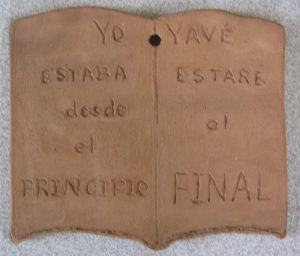
We know that Irene was frightened during her time in Huasahuasi. We also know that during a retreat in January 1991 she experienced the gift of trust more deeply than ever before. She made a clay object in the shape of an open book on which she wrote the words in Spanish: YO YAVE ESTABA DESDE EL PRINCIPIO. ESTARE EL FINAL – I Yahweh was from the beginning and will be until the end, not distant, but with her. After the retreat she wrote to a friend, “Thanks be to God I feel at peace and ready to live without fear. But I don’t take this grace lightly. I pray for it every day.”
At some time in Peru she wrote this morning offering which also reveals something of her relationship with God, how God was working in her.
So today i accept all as gift
And ask to find you Lord,
The giver in the gift.
I choose to face life without fear
And to live wholeheartedly
In each present moment.
May my heart sing today
A song of loving, grateful praise.
Amen.
I am God’s work of art.
I am precious in his sight.
I wonder which of these thoughts came to mind as she lay face down on the plaza with the four men anticipating being shot as she’d seen others shot. I wonder how she experienced Yahweh with her at the end.
Frances Maguire rsj
Sr Edith Prince Rite of Committal
May 20, 2020Sister Edith Prince entered eternal life on 11 May 2020.
We celebrate and give thanks for the life of Sister Edith.
Sister Edith Prince Liturgy Booklet (PDF)
Rite of Committal for Sister Edith Prince (PDF)
‘Everything is Connected’ – Laudato Si’ Week 2020
This week (16-24 May), we celebrate the fifth anniversary of Laudato Si’, the amazing and life changing encyclical by Pope Francis.
This revolutionary document calls us, as Catherine Shelton rsj so succinctly states:
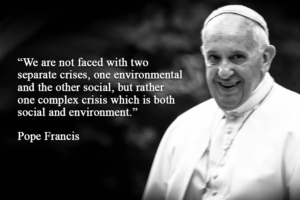 Pope Francis summons us, both to a deep and profound care for earth, and to a clearer recognition of the challenges facing earth and all of creation. He reminds us, in the theme of this week, that “everything is connected”.
Pope Francis summons us, both to a deep and profound care for earth, and to a clearer recognition of the challenges facing earth and all of creation. He reminds us, in the theme of this week, that “everything is connected”.
Both Pope Francis and Bishop Long offer reflections (provided below) that call us to a new place. You are invited to share these with families and communities, as we consider once again the gift and challenges of this time.
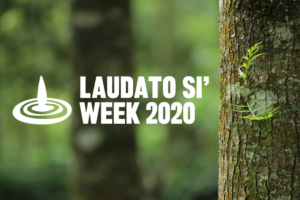 The confluence of recent events – the young people’s climate strike (School Strike 4 Climate) on Friday 15 May, the tragedy of the summer bushfires across Australia, the impact of COVID-19 – all of these can only strengthen the call of this encyclical, articulated by these two inspiring church leaders, to care more deliberately for earth and the common good.
The confluence of recent events – the young people’s climate strike (School Strike 4 Climate) on Friday 15 May, the tragedy of the summer bushfires across Australia, the impact of COVID-19 – all of these can only strengthen the call of this encyclical, articulated by these two inspiring church leaders, to care more deliberately for earth and the common good.
You might also find some of the following resources helpful:
- Overview of Laudato Si’ by Neil Darragh, indicating the concerns, the care, and the change the Pope hopes for. (online here)
- LCWR‘s most recent Resolution to Action (vol. 24 no.3): ‘Climate: A Common Good’ (click here)
- Leonardo Boff – The Magna Carta of integral ecology: cry of the Earth-cry of the poor
- Laudato Si’: Caring for our Common Home Discussion Guide – for small groups to explore and dialogue with this important document. Prepared by USCCB Justice Peace and Human Development. English (click here)
Jan Barnett rsj
Josephite Justice Coordinator
Pope Francis invites the Church to celebrate Laudato Si’ Week
Message for the Fifth Anniversary of Laudato Si (Bishop Vincent Long | Chair, Bishops Commission for Social Justice – Mission and Service)
Images:
Pope Francis obtained from pxhere. Used with permission.
Brown Tree Trunk by Mahima obtained from Pexels. Used with permission.
One Hundred Years in Albert Street
One hundred years ago this Friday, on Saturday 15 May 1920, additions to St Joseph’s Providence in Albert Street East Melbourne were blessed and opened by His Grace the Archbishop of Melbourne, the Most Reverend Dr Daniel Mannix.
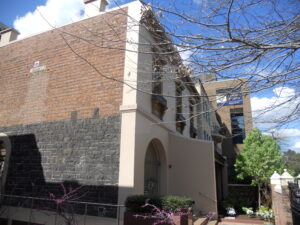 To meet the need for etended accommodation at St Joseph’s Providence in East Melbourne the Sisters of St Joseph purchased the two-storey residence adjoining the Providence. The property was built as a townhouse and owned by Dr and Mrs Howitt.
To meet the need for etended accommodation at St Joseph’s Providence in East Melbourne the Sisters of St Joseph purchased the two-storey residence adjoining the Providence. The property was built as a townhouse and owned by Dr and Mrs Howitt.
After officiating at the blessing and opening of the additions to St Joseph’s Providence, His Grace then opened a fete in the grounds of St Patrick’s College, East Melbourne in aid of the ‘Home’, which was to become known as St Joseph’s Hostel for the next sixty plus years. In addition to His Grace the Archbishop of Melbourne, who was about to set sail on a visit to the “old countries”, others present included the Bishop of Sale, the Right Reverend Dr Phelan, the Bishop of Ballarat, the Right Reverend Dr Foley and the Administrator of the Bendigo Diocese, the Very Reverend Dean Rooney. A guard of honour was provided by the children attending the schools conducted by the Sisters of St Joseph. It was quite an occasion.
The Advocate reported that in declaring the Fete open, Archbishop Mannix said he was “always glad to do whatever he could for the Sisters of St Joseph.” Furthermore, he “would not fail to tell the people on the other side of the world that the Australian Sisterhood of St Joseph were the equals of any Sisters in the whole of the Catholic world.”
According to the report, the fete had been organised to assist the Sisters in “carrying on” their Home for girls desiring to live with them, in preference to going into ordinary boarding houses in Melbourne. It was a very necessary provision and was deserving of generous support.
The Garland of St Joseph dated 1 July 1920 noted that the Mother-General of the St Joseph Order was present at the blessing of the additions to St Joseph’s Providence, East Melbourne on Saturday 15 May. She was making her annual visit from Mount Street, North Sydney.
Today, a century later, the former townhouse and hostel is part of the Mary MacKillop Heritage Centre and home to the O’Callaghan Community. We hope to celebrate this special anniversary at the Mary MacKillop Heritage Centre with the residents of the O’Callaghan Community later in 2020.
Garry McLean, CEO
LLoyd Fisk, Archivist,
Mary MacKillop Heritage Centre
Media Release: CERA
May 18, 2020Catholic Emergency Relief Australia (CERA) has opened an initial grant application round to support those continuing the long process of recovery from the summer’s catastrophic bushfire season.
CERA chair Susan Pascoe said while the country “is largely – and understandably – focused on the COVID-19 pandemic”, challenges like social isolation and financial hardship are exacerbating some problems the bushfires caused…
You’re invited to continue reading the Media Release, view the grant application form and visit the CERA website below:
Media Release: Grant Applications Opened for Ongoing Bushfire Recovery (PDF)
National Volunteers Week 2020
Volunteering at Mary MacKillop Place, Mount Street, North Sydney.
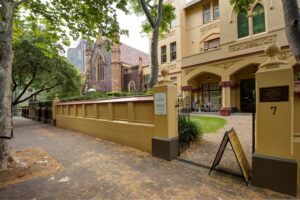
Arriving at the Business Centre of North Sydney the scene is one of a busy working environment. Cars, buses and people going many ways to engage in their daily duties to serve the community. A short walk up the hill of Mount Street we arrive at Mary MacKillop Place.
We have come upon a quiet place in a busy environment. The Museum offers visitors the opportunity to learn about the life and work of Australia’s first Saint, Mary MacKillop and Father Julian Tenison Woods, who along with Mary co-founded the religious order of the Sisters of Saint Joseph. The story of Mary’s work in founding a religious order in Australia outlines the many qualities that give people hope in today’s world. Mary showed great faith, courage, perseverance, loyalty and dedication to a worthy cause as she encountered many obstacles and even rejection of her vision for the future.
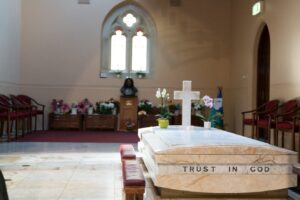
A visit to the Mary MacKillop Memorial Chapel is an experience of calm and peace. Many visitors come each day to this sacred place of prayer and pilgrimage –some as tourists from overseas, others to ask for help through Mary’s intercession for the needs in their lives. The tomb of Saint Mary MacKillop is present in the chapel and patrons can kneel and pray in the peace of God’s presence.
As a volunteer in both the Museum and the Chapel, I enjoy sharing the story of how Mary achieved her vision with the help of Julian and letting others know that it was Mary’s trust in God that kept her strong. There are over 100 volunteers at Mary MacKillop Place, and we work in many different areas of the complex. As well as being tour guides in the Museum, others volunteer in the Café and Gift Shop assisting with the preparation of food and coffee and serving tables. Some volunteers help in the Chapel where they provide a ministry of listening for people who wish to share their stories or who are seeking prayers through the intercession of Mary MacKillop. Volunteers also assist in administrative tasks, IT, marking and sorting stock for the Café and many other miscellaneous tasks.
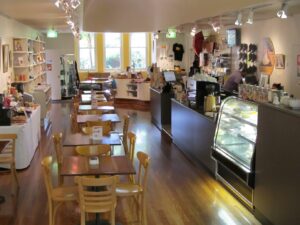
I became a volunteer because I wanted others to be aware of the great work of our first Australian Saint and to let people know how the virtues of Mary MacKillop can help us find peace in living our lives. With a large group of volunteers, we have the opportunity to form friendships and exchange information which helps us fulfill our roles. Mary MacKillop Place is certainly a place of peace and tranquility and along with all the other volunteers it is my privilege to be able to contribute to keeping the legacy of Mary MacKillop and the Sisters alive in today’s world. Unfortunately during this Coronavirus Pandemic we are unable to perform our usual duties, but are grateful to be kept connected through regular inspirational messages being sent to all the volunteers.
Beverley Badcock
In the Steps of Borrowed Shoes
May 15, 2020For International Day of Families this year, our author focused on how at a time of great exclusion, the Sisters made an indigenous girl captain of the school debating team, and in their borrowed shoes, they won.
This is a memory, not a history. For over half a century I thought this story belonged to the Sisters of Saint Joseph in Brisbane. Three days ago, when I tried to Google to find more information about the school, I began to wonder if it was staffed by another order. I was only ten, or younger.
But I write fiction as well as history. Sometimes it is easier to explain the truth in a novel, when you don’t have enough facts to say, ‘it happened just like this.’ Since I was that small child, the Sisters of Saint Joseph have been my guide and inspiration. Today I realised that even if my memory is faulty, this story still belongs to the Sisters of Saint Joseph, whichever genre it might be catalogued in.
One definite memory: Mum drinking tea in a staff room with the Sisters in brown habits, the tea in thick blue cups, strong enough to melt the spoon. Suddenly one of the Sisters glanced out the window. She raced outside to the bare playground and grabbed the two boys fighting by their collars, then held them apart. No belting, just a lecture. By the end they looked ashamed.
‘ Sorry, Sister,’ they said as they shook hands.
Sorry, Sister,’ they said as they shook hands.
Most Saturday afternoons our family took afternoon tea at Stuartholme, a school on the foothills where Dad taught debating. I loved the silent cloisters, the tree filled gardens, the vast floor to ceiling books where I learned the riches of history. The tea was served in thin china teacups. The quiet conversation was not interrupted by kids yelling outside.
Mum taught debating at the other school. In the other schools where Mum and Dad taught debating, the parents paid for it as an ‘extra’, like music or Art of Speech. At that school the Sisters had somehow found enough money for everyone to learn. Debating – finding the right words and best arguments to support your beliefs – might be a route to whatever life the students dreamed of, from an apprentice to university or prime minister.
 Few girls debated in early 1960’s, but it seemed no one had thought to make rules to say they weren’t allowed to. There were no rules excluding indigenous students either, just lots of excuses to kick them out. But those Sisters made an indigenous girl Captain of their school debating team. They borrowed shoes for the team too.
Few girls debated in early 1960’s, but it seemed no one had thought to make rules to say they weren’t allowed to. There were no rules excluding indigenous students either, just lots of excuses to kick them out. But those Sisters made an indigenous girl Captain of their school debating team. They borrowed shoes for the team too.
Mum came home laughing after that first debate. The team had been nervous, barely articulate. But something had been wrong with the other team. The ‘impossible’ team had won.
That win gave them confidence. They deserved their win in the next debate, and the next. By the end of that year, they won the championship.
I am only one of those who has tried to follow in the footsteps of those borrowed shoes.
Jackie French
Photo: People Forming Round by Shoes by Ingo Joseph obtained from Pexels. Used with permission.
Photo: People Looking at Laptop Computer by Fox from Pexels. Used with permission.
